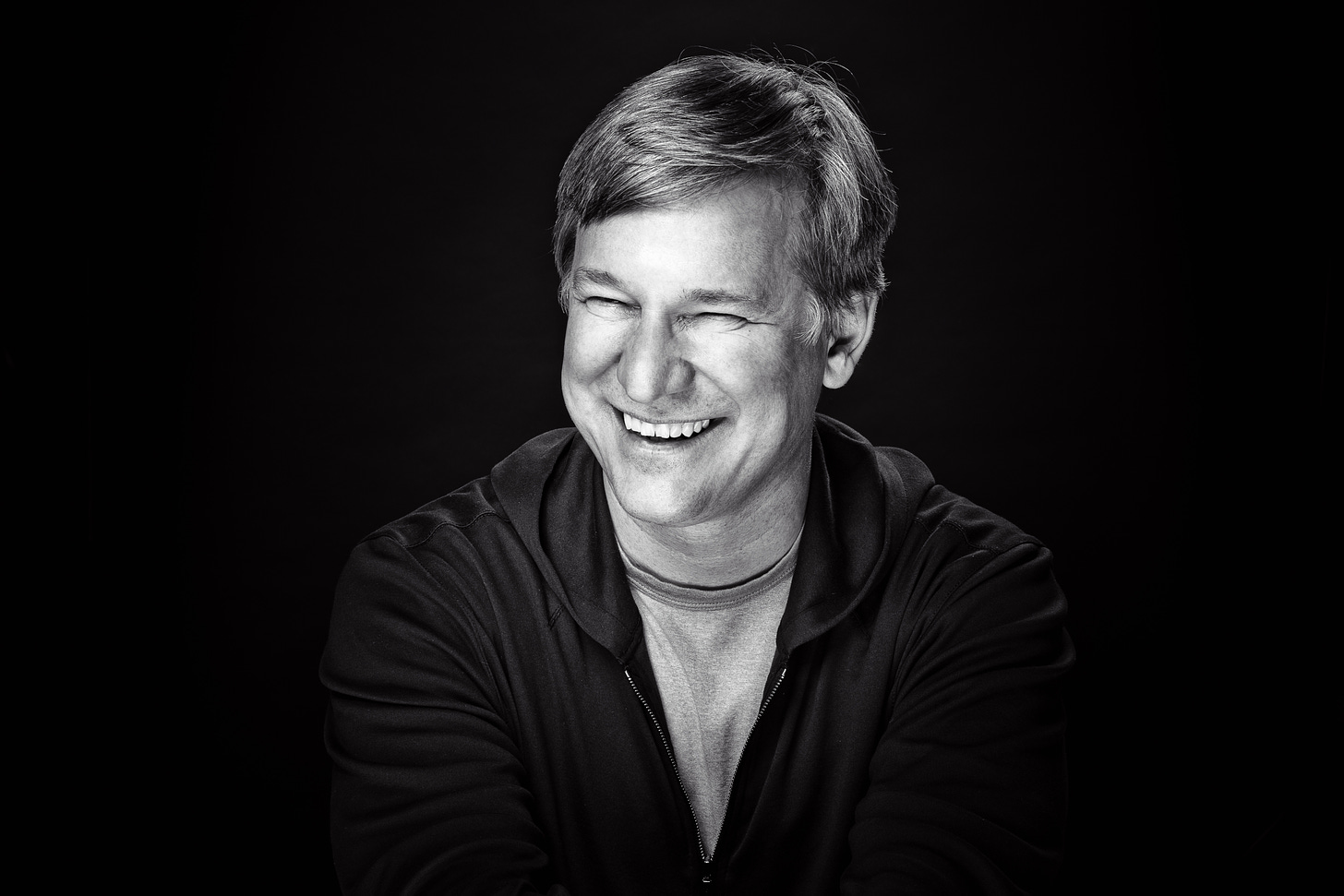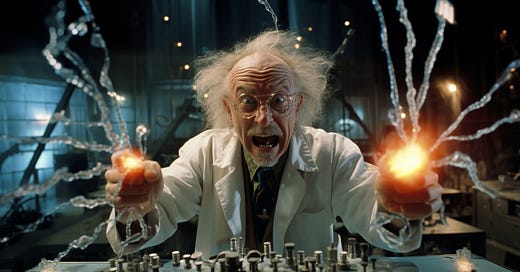

Discover more from The Owner's Guide to the Future
Welcome to the Owner’s Guide to the Future.
It’s your future. But the owner’s manual is missing. Let’s fix that!
Welcome to my newsletter. I am happy that you have joined me. This is an experiment. The goal is to do some (un)structured thinking about how society is changing. Specifically I want to understand how technology is shaping our collective behavior and our perception of reality.
Along the way, I plan to apply some of the techniques pioneered by futurists, pioneering thinkers and forecasters. If this works, we may end up with a useful collection of ways to forecast our future trajectory. If it doesn’t, at least I’ll have an annotated record of how many times I was wrong. That’s a good way to learn.
In any case, I hope this newsletter will inspire you to take ownership of the future.
Below, for those who are interested in background context, I offer some personal history that explains my motivation for starting this project. Subsequent newsletters in this series won’t be as personal as the info that I share below. I thought that some readers might like to get acquainted with where I am coming from.
I’ll see you in the (near) future!
Things started to get weird.
Around 2014, I started to notice that things were strange and getting stranger. Previously, I felt comfortable with the pace of change. I liked it! Frequently in my career I had the opportunity to contribute in my own modest way to the ever-changing technology and media landscape. Typically, the jobs I took never existed before I began, and often these were jobs with a new organization in an entirely new industry.
Tech-driven change was my home turf, and I was fairly confident in my ability to anticipate future trends. But about a decade ago, things began to get really weird.
First, I was aware of the social impact of tech-driven change. People seemed to be hiving off into separate realities shaped by their media consumption habits. This was happening quickly. Around 2014, I began to feel bifurcated about this because, even as I was experiencing filter bubbles firsthand, I was also an advisor to some of the biggest media, technology and telecom companies in the world. They were driving the trend, and they seemed unable to do anything about the consequences.
I tried to alert them in my workshops, talks and in my writing. These companies hired me to keep them apprised of digital media trends. But they seemed to be blind to the impact of the technologies they were promoting. The devices and apps and networks they were selling had the power to transform society.
I felt like this was an urgent topic, but taking account of socio-political impact fell outside of my clients’ purview. They were far more concerned about competition and disruptive threats on the horizon; you know, the stuff of typical strategic planning sessions. They were unfazed by (or unaware of) the social impact made by their products. When I told them that digital media was reshaping society, I felt like an emissary from another dimension of time and space.
Previously, I had worked as an executive inside of big media companies, and I had also been dealing directly with the largest telecom companies in the world for more than a decade. So I was pretty familiar with the world view from inside those citadels. I knew how to communicate to the leadership in terms they understood.
But I have also always worked with developers, artists and indie game studios, and I had been a co-founder of creative software startups. I understood the disruptive mindset. Developers are similar to artists because they like to experiment, mess around, push past boundaries and invent new things.
There is a big cultural gap between those folks and corporate executives.
I tried to bring both groups together. My approach was to create a forum where the corporate dinosaurs could meet the feisty startups who were hellbent on disruption to meet in person, get acquainted, and thrash through issues together. Throughout the 2000s, this practice evolved into a kind of cultural diplomacy. I did this by hosting and organizing events like the Game Developer Conference’s Mobile Symposium and other international conferences where I brought together the media conglomerates with the telecom companies and independent developers.
The diplomatic approach worked reasonably well until the 2010s. That’s when the cultural gap became too great.
For instance, in 2014, when I spoke to TV executives about Twitch, not a single person in a room of 400 knew what Twitch was, even though it had recently been purchased by Amazon for $1 billion… and was in the process of hijacking their most desirable audience.
Likewise, telecom executives were clueless about the media consumption habits and behavior of their own subscribers on their own network. It was happening right in front of them, but they couldn’t see it. They had no understanding of the immense value of user behavior they held in their hands. They missed a lot of opportunities.
At a macro level I understood clearly what was happening: a society that had been shaped for a century by one-to-many broadcast media was suddenly splintering into thousands of sub-cultures, each defined by new communication tools and their own preferred apps. This led to a growing divergence of understanding.
What was lost? Consensus reality. Previously broadcast media had conditioned us to a common collective narrative about the world that we occupied. Digital media exploded that story into smithereens. Welcome to Choose Your Own Reality.
Splintering and accelerating
Second, this process seemed to be accelerating. As I compiled monthly trend reports for certain clients, by 2014, it became impossible to capture every new development each month into a single document. There was too much new stuff. The digital media landscape was expanding, speeding up, sprawling out of control, veering into incomprehensibility.
We previously had a handful of broadcast TV networks, a few dozen cable TV channels, a few dozen local radio stations and a couple of local newspapers. By 2010 we had thousands of channels of communication, and new ones were coming. Each demanded something from the audience.
Every new streaming video series demanded 20 hours that I did not have. Every new messaging app offered a novel interface with its own learning curve. The number of apps in the App Store exceeded 2 million. There were suddenly more than 400 scripted TV series in production in Hollywood. And millions of YouTube channels. And an endless number of new video apps. It was impossible for any individual to consume it all.
Back in the 1990s, it had been possible for a person to stay on top of new media trends and remain conversant with the latest in television, movies and pop music. But by 2014 the media scene had splintered into a million vectors, each on its own trajectory.
In retrospect, this all seems quite obvious. Today, each of us must deal with the fallout of digital media expanding and infiltrating and re-shaping business, culture, politics, art, and civil society. Sure, we get some benefits, such as abundant free content and digital superpowers; and we also get the now-familiar headaches caused by information overload, such as fake news, phony social media outrage, clickbait headlines and the rapid viral transmission of ideas that are sometimes engineered to provoke conflict.
At the time, it felt bewildering and exhilarating.
In order to make sense of the changes, I needed to construct a new kind of narrative. That’s when I developed the habit of putting my own spin on the trends, building my own interpretation of what was happening, rather than just recounting the new developments.
That’s the kind of analysis that I plan to share with you here.
Assembling the toolkit
For a long time, I have been gathering material for an Owner’s Guide to the Future. My goal is to assemble useful tools for processing and understanding rapid change. Different ways of seeing. New perspectives. Techniques for re-framing and recontextualizing our experience.
Creating a toolkit is a proactive response to chaos. I am constitutionally unable to remain passive in the face of massive change. I feel the urge to do something about it, to shape it and influence it. But I don’t want to act randomly or instinctively. I need a framework for rational decision-making.
For inspiration, I turned to the experts. Since my high school days in Hudson, Ohio during the late 70s, I’ve devoured the writing of sociologists, trend forecasters and futurists. I am a devotee of Marshall McLuhan. I was inspired by Alvin and Heidi Toffler. At home, I read Future Shock, the Shock of the New, and Power Shift. In school I studied a wide range of approaches to the human condition by writers that ranged from Shakespeare to Nietzsche to Hemingway and Mailer.
Science fiction is a great tool for vividly imagining possibilities. As a boy, I devoured science fiction, beginning with Ray Bradbury, Andre Norton, Ursula K. LeGuin and Arthur C Clarke. In more recent years my sci fi landscape has opened up to the alternative realities of Octavia Butler, Kelly Link, and Helen Oyeyemi.
Visual exploration is equally important. I was fascinated by different ways of seeing, like those of Georgia O’Keeffe, Joan Mitchell and Helen Frankenthaler. These great artists inspired my own artwork. As a producer, I developed new media with artists like Terry Gilliam and Peter Max and comics like Howie Mandel, Eric Idle and Iliza Schlesinger. As a visual artist, I collaborated with the Rolling Stones, Ozzie Osbourne, George Michael and other recording artists.
I needed more. It’s a big world, and the pace of change varies everywhere. I sought perspectives from people in other countries and different cultures. Wherever I traveled for work, I made contact with the people in the local community who were busy constructing their version of the future. When MTV sent me to Asia to launch the pop culture channel there, I sought out local artists and media philosophers in India, China, Hong Kong, Singapore, Philippines and Thailand. Since then I’ve held conversations with future thinkers in Australia, Argentina, Venezuela, Canada, Finland, Sweden, Germany, Russia, Spain, France, Israel, Bahrain, the UK and many other places.
Recently I began to share these conversations with future thinkers on the podcast I created with Brett King. It’s called The Futurists and you can find it on all the major podcast platforms.
These experiences, ideas and insights comprise my toolkit. Whenever I work on a new project, I draw from the tools of perception developed by those original thinkers and others like them. By borrowing their techniques and adapting them to circumstances, I make them my own. That’s how I assembled my own toolkit for interpreting the future and thinking about what comes next after what’s next.
I wish to share these tools with you. Hopefully you will be inspired to adopt them and assemble your own toolkit, and thereby create your own guide to the future.
Let’s make it a group practice
I’d like to hear from you. If you read something in this column that triggers a thought, please post a comment. Let’s talk about it, thrash it out. I am okay with constructive criticism. Usually. We can all benefit from multiple points of view. The flow needn’t be one-way.
What to expect
My plan is to share with you my thoughts as I contend with the firehose of new concepts that rush at us constantly. By definition, that process is unpredictable. I can’t guarantee that I will post a new article on a regular schedule. I’ll do my best to provide you with timely commentary and some broader perspectives as often as I can.
In the future I might kick this project up a notch with a subscription tier, but until I publish on the regular, I plan to provide this information for free.
If you feel like supporting me in this endeavor, please do so by making a pledge! The best way you can support me is to share this newsletter with friends who might wish to subscribe.
I appreciate your support. As a gesture of my appreciation, you can download a PDF of my latest report, “The Deep Weirdness of Artificial Intelligence” here. I will also be sending out this report in a series of emails in the next few days.
Thanks for reading! See you in the (near) future!









Brilliant. Thank you for this. I will anxiously await future installments.
One thing that has occurred to me recently is the power contain in the language we use to communicate. It’s easy to spot the angry, the ignorant etc. it’s much harder to discern the nuances of language. It can be equally subversive or inspiring. In my current focus on mental health I’ve discovered that the stigma that characterizes someone who suffers from a mental illness or traumatic injury is derived by a healthcare industry that profits off of keeping people sick. This has led me to realize that if we are to get a handle on our current pandemic related mental health crisis the associated stigma will have to be eradicated. It seems obvious that a place to begin is in what language we use to communicate these issues. In essence: change the language - change the narrative.
I’d be very curious to get your opinion?
Your “mental wellness advocate” friend.
CB